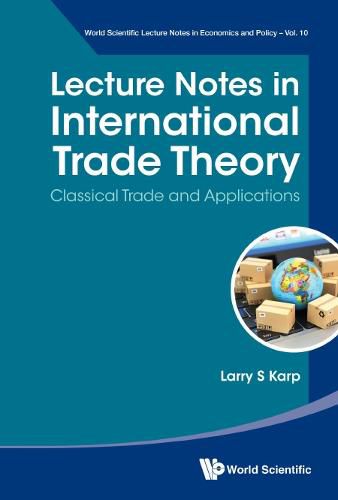Readings Newsletter
Become a Readings Member to make your shopping experience even easier.
Sign in or sign up for free!
You’re not far away from qualifying for FREE standard shipping within Australia
You’ve qualified for FREE standard shipping within Australia
The cart is loading…






This title is printed to order. This book may have been self-published. If so, we cannot guarantee the quality of the content. In the main most books will have gone through the editing process however some may not. We therefore suggest that you be aware of this before ordering this book. If in doubt check either the author or publisher’s details as we are unable to accept any returns unless they are faulty. Please contact us if you have any questions.
Lecture Notes in International Trade Theory covers classical international trade models (including the Ricardian, Ricardo Viner, and Heckscher-Ohlin-Samuelson models). The course is designed for M.Sc. and first year PhD students. It relies on both graphical and analytic methods, requiring only intermediate microeconomics and a solid grounding in calculus. The material emphasizes ‘second-best’ settings, where markets are imperfect. The goal is to equip students with a good enough understanding of open-economy general equilibrium relations that they understand how distortions ripple across different markets, e.g. commodity and factor markets. The Author applies these ideas to environmental and natural resource problems, including pollution ‘leakage’ (where pollution reductions in one country are offset by trading partners’ increased pollution) and imperfect property rights. Other applications include the general equilibrium effects of commodity and trade taxes, international transfers (the ‘transfer problem’), minimum wage constraints, and immiserizing growth. The Author assumes that students have some experience in formulating and answering comparative statics questions in an optimization setting. Building on these skills, and developing the idea of stability in an equilibrium setting (the Marshall Lerner condition), students learn how to formulate and answer comparative static questions in trade models.
$9.00 standard shipping within Australia
FREE standard shipping within Australia for orders over $100.00
Express & International shipping calculated at checkout
This title is printed to order. This book may have been self-published. If so, we cannot guarantee the quality of the content. In the main most books will have gone through the editing process however some may not. We therefore suggest that you be aware of this before ordering this book. If in doubt check either the author or publisher’s details as we are unable to accept any returns unless they are faulty. Please contact us if you have any questions.
Lecture Notes in International Trade Theory covers classical international trade models (including the Ricardian, Ricardo Viner, and Heckscher-Ohlin-Samuelson models). The course is designed for M.Sc. and first year PhD students. It relies on both graphical and analytic methods, requiring only intermediate microeconomics and a solid grounding in calculus. The material emphasizes ‘second-best’ settings, where markets are imperfect. The goal is to equip students with a good enough understanding of open-economy general equilibrium relations that they understand how distortions ripple across different markets, e.g. commodity and factor markets. The Author applies these ideas to environmental and natural resource problems, including pollution ‘leakage’ (where pollution reductions in one country are offset by trading partners’ increased pollution) and imperfect property rights. Other applications include the general equilibrium effects of commodity and trade taxes, international transfers (the ‘transfer problem’), minimum wage constraints, and immiserizing growth. The Author assumes that students have some experience in formulating and answering comparative statics questions in an optimization setting. Building on these skills, and developing the idea of stability in an equilibrium setting (the Marshall Lerner condition), students learn how to formulate and answer comparative static questions in trade models.